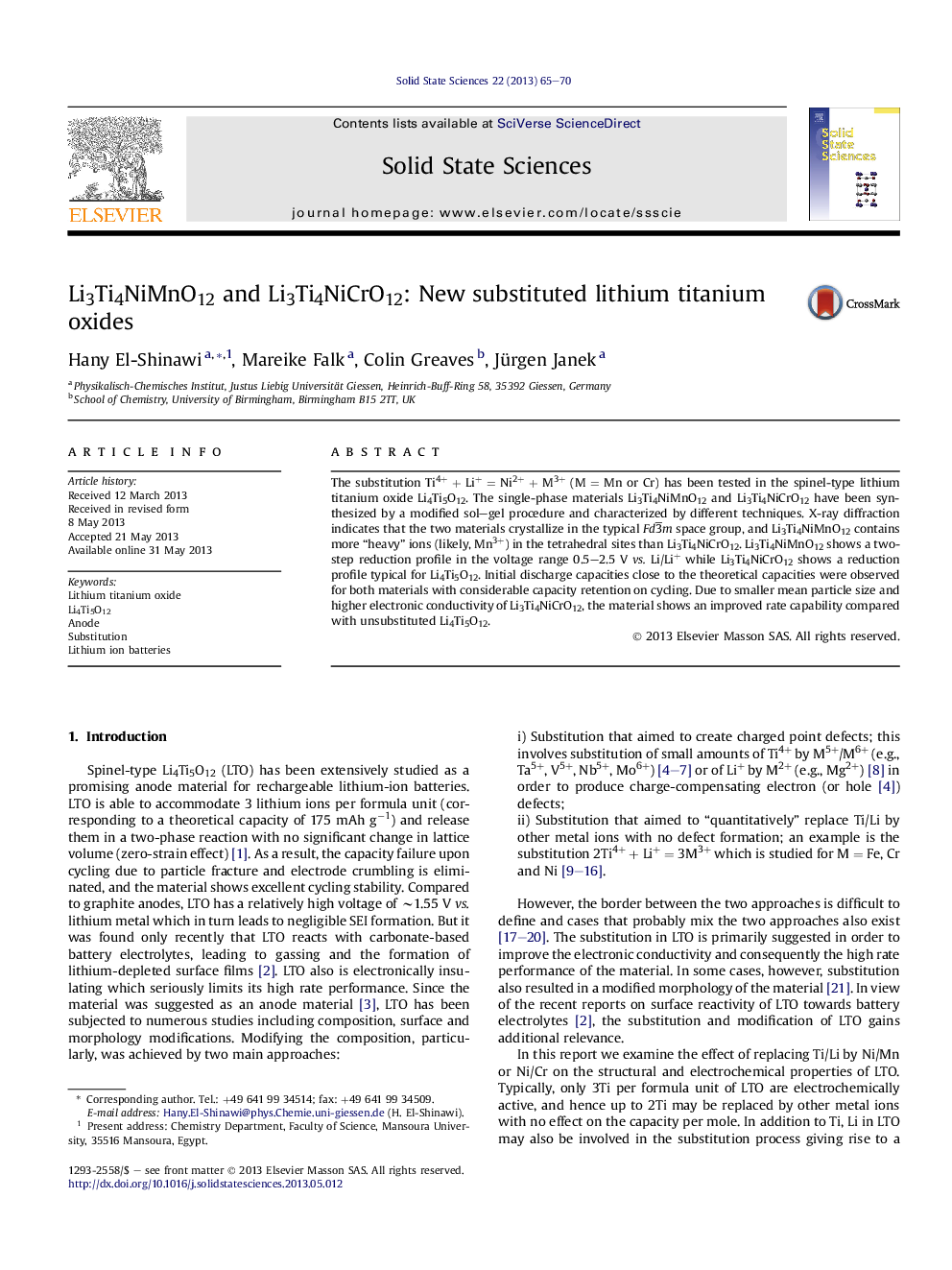| Article ID | Journal | Published Year | Pages | File Type |
|---|---|---|---|---|
| 1504670 | Solid State Sciences | 2013 | 6 Pages |
•The substitution Ti4+ + Li+ = Ni2+ + M3+ is tested in Li4Ti5O12.•Single-phase Li3Ti4NiMnO12 and Li3Ti4NiCrO12 were synthesized.•The electronic conductivity is about one order of magnitude higher than Li4Ti5O12.•Li3Ti4NiMnO12 has a different discharge profile.•Li3Ti4NiCrO12 has smaller particle sizes and has the best rate capability.
The substitution Ti4+ + Li+ = Ni2+ + M3+ (M = Mn or Cr) has been tested in the spinel-type lithium titanium oxide Li4Ti5O12. The single-phase materials Li3Ti4NiMnO12 and Li3Ti4NiCrO12 have been synthesized by a modified sol–gel procedure and characterized by different techniques. X-ray diffraction indicates that the two materials crystallize in the typical Fd3¯m space group, and Li3Ti4NiMnO12 contains more “heavy” ions (likely, Mn3+) in the tetrahedral sites than Li3Ti4NiCrO12. Li3Ti4NiMnO12 shows a two-step reduction profile in the voltage range 0.5–2.5 V vs. Li/Li+ while Li3Ti4NiCrO12 shows a reduction profile typical for Li4Ti5O12. Initial discharge capacities close to the theoretical capacities were observed for both materials with considerable capacity retention on cycling. Due to smaller mean particle size and higher electronic conductivity of Li3Ti4NiCrO12, the material shows an improved rate capability compared with unsubstituted Li4Ti5O12.
Graphical abstractFigure optionsDownload full-size imageDownload as PowerPoint slide
